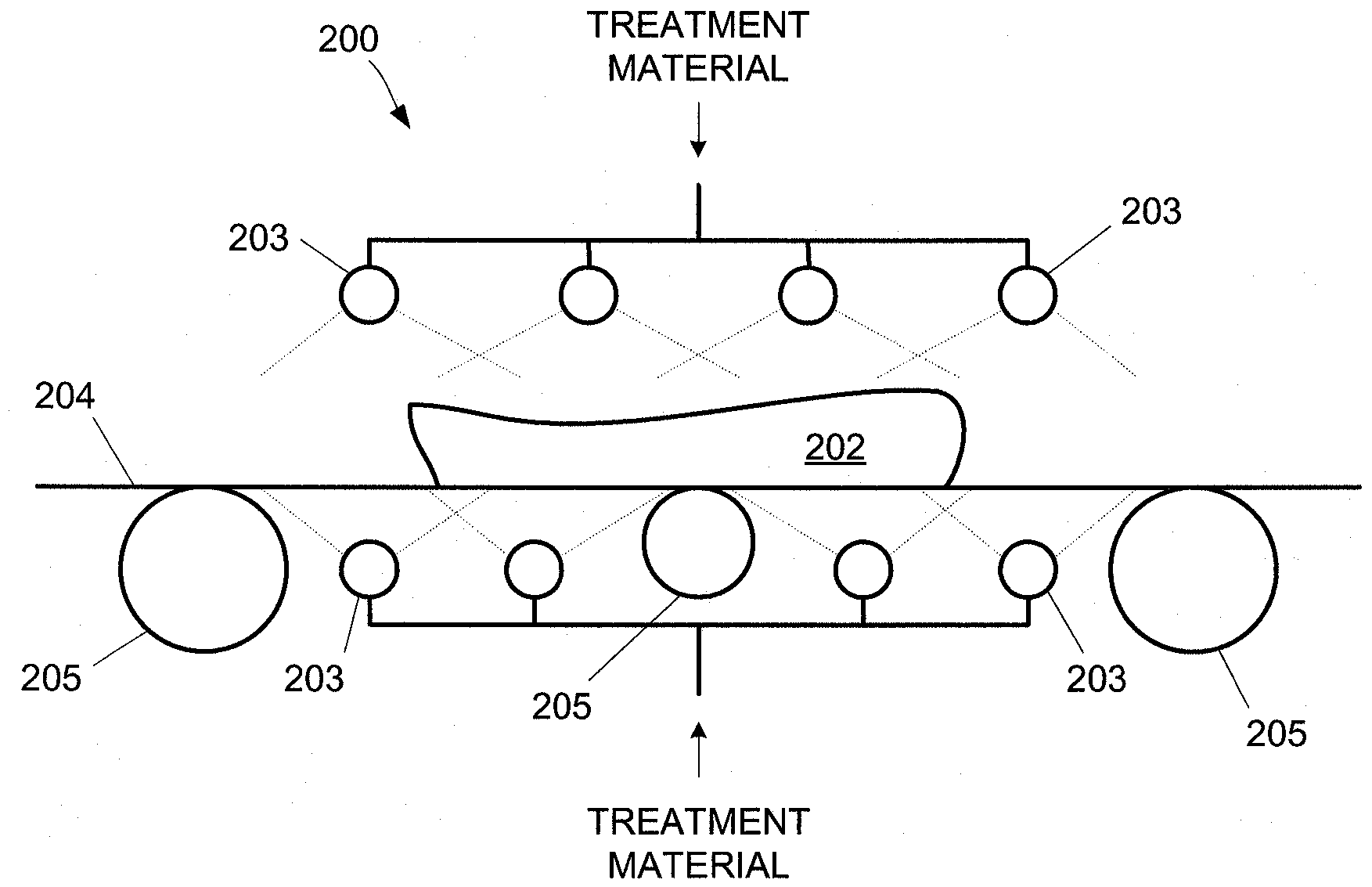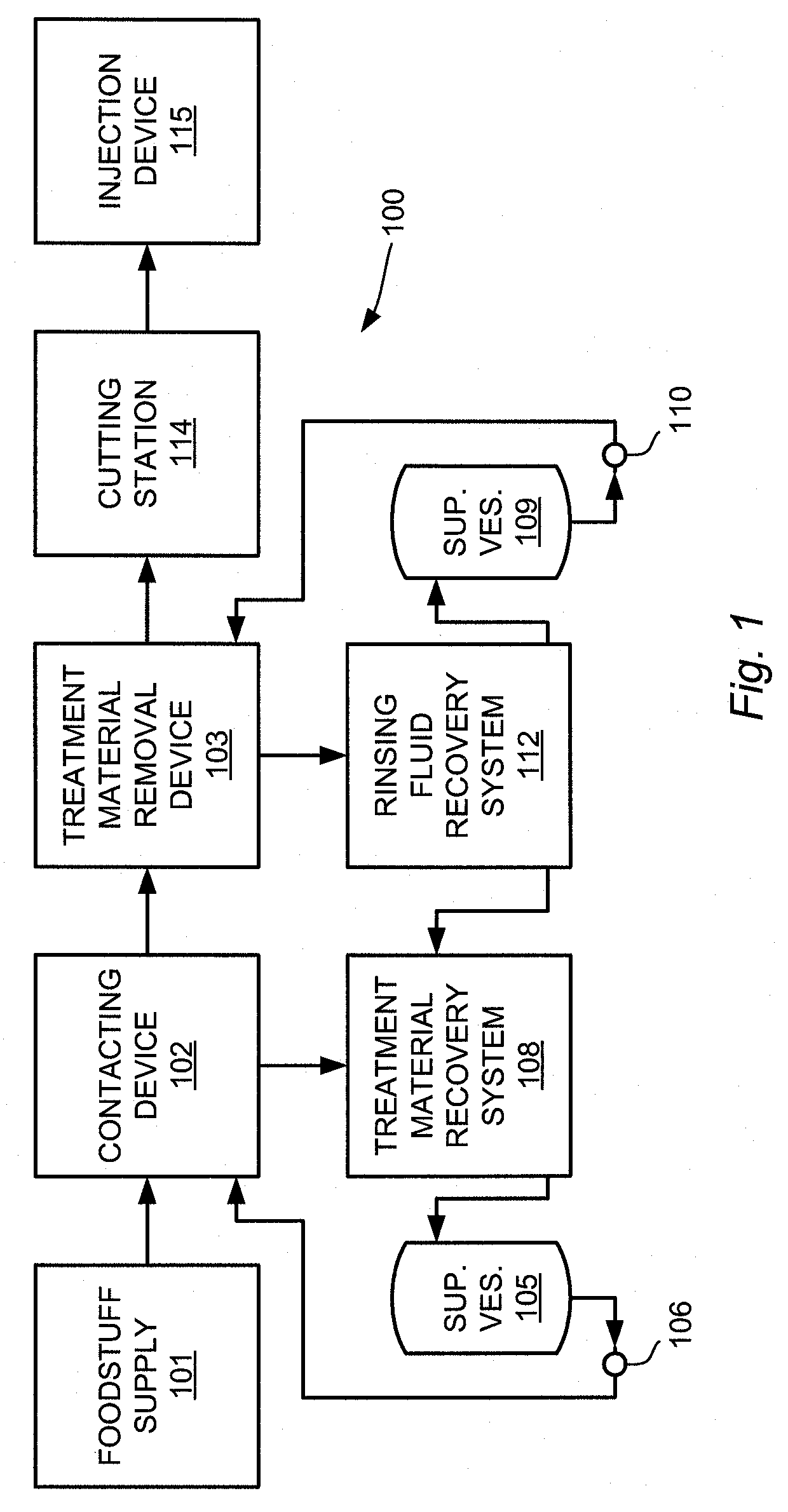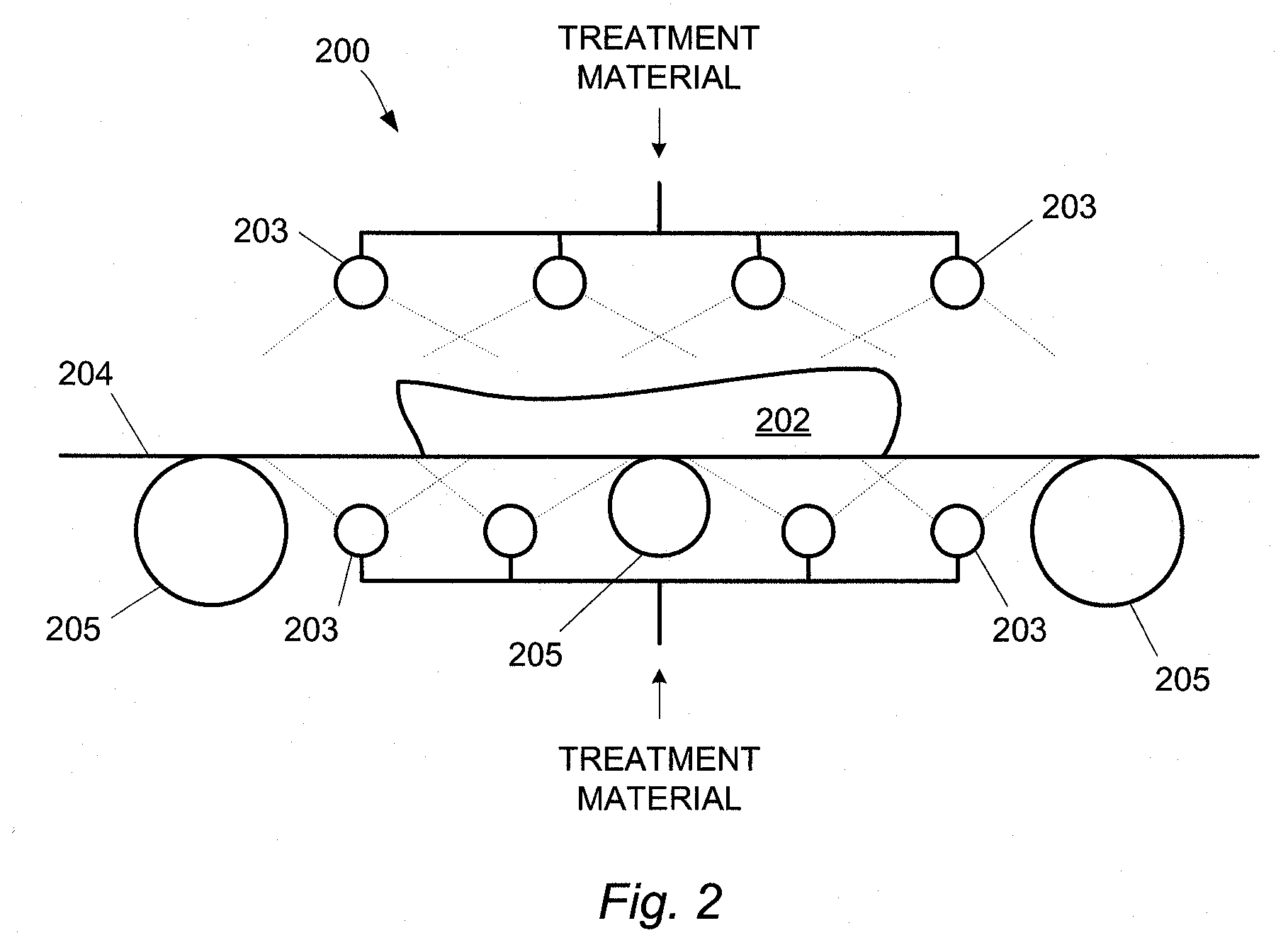Method and apparatus for applying treatment materials to foodstuffs
a technology of food products and treatment materials, applied in the field of food processing, can solve the problems of ammonia-based material treatment, affecting the texture of meat, and affecting the taste of meat products,
- Summary
- Abstract
- Description
- Claims
- Application Information
AI Technical Summary
Benefits of technology
Problems solved by technology
Method used
Image
Examples
examples
[0056]Warm beef carcass pieces (shortly after slaughter and before any chilling activity) were inoculated at the surface to an average microbe load of 227,600 cfu / g (colony forming unit per gram of meat)(5+log). Selected carcass pieces were dipped in liquid ammonia (ammonia below −28° F.) for 3, 6, 9, 12, 15, and 18 seconds. In all instances the contact between the meat pieces and the liquid ammonia resulted in complete elimination of the bacteria at the surface of the meat pieces. Some of the unfrozen inoculated beef carcass pieces were exposed to ammonia gas for 30, 60, 90, 120, 150, and 180 seconds. Complete elimination of bacteria occurred in the pieces treated for 60 seconds and over, indicating that complete elimination of bacteria occurred somewhere between 30 and 60 seconds. The ammonia gas treatments left a more significant ammonia odor as compared to the liquid ammonia treatments.
[0057]A first group of unfrozen beef carcass pieces were first inoculated at the surface to 15...
PUM
 Login to View More
Login to View More Abstract
Description
Claims
Application Information
 Login to View More
Login to View More - R&D
- Intellectual Property
- Life Sciences
- Materials
- Tech Scout
- Unparalleled Data Quality
- Higher Quality Content
- 60% Fewer Hallucinations
Browse by: Latest US Patents, China's latest patents, Technical Efficacy Thesaurus, Application Domain, Technology Topic, Popular Technical Reports.
© 2025 PatSnap. All rights reserved.Legal|Privacy policy|Modern Slavery Act Transparency Statement|Sitemap|About US| Contact US: help@patsnap.com



